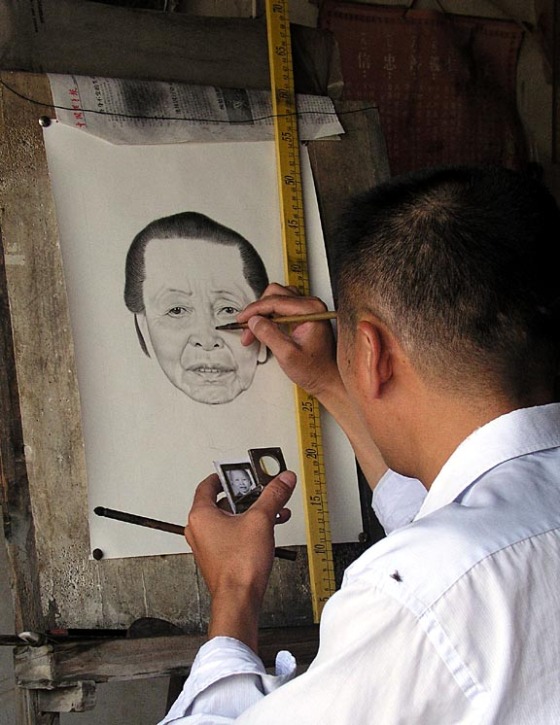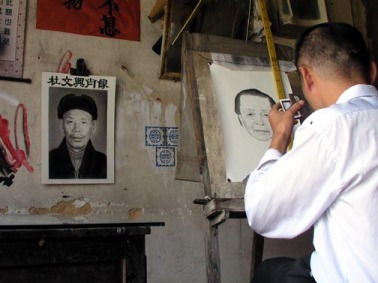Sam and Dave Part 4
Greetings,
Inside every family’s deep dark Hanoi space was a main room and altar for dead relatives, candles, fruit, burning incense a spirit food, and the black and white and color images reminded me of the Chinese artist in Maija, the poor pig village near the Fujian university where I lived for two years riding my bike across hills up and down narrow dirt back roads,
watching butterflies mate in the dust, old people threshing rice in fields, a woman lugging piles of white cauliflower to market in her bamboo baskets suspended on a bamboo poles, down long small tight dusty paths past athletic shoe shop sweat shop factories filled with morose girls and women hunched over threading clacking Butterfly machines making uppers, lowers, tongues and seamless survival wages until I reached a narrow street to sit drinking Chinese green tea with a man in his little shop.
Further up the hill were small wooden shops with appliances, family market stalls, street food, electrical stores and butchers. In a small mud and brick place was an artist. His job was drawing pictures of dead people.
After someone died a relative gave him a common small black and white image, the kind from 1949 when the country declared itself free, independent, and open with 3 Represents and benevolent Chairman Mao (our grandfather bless his heart) smiled at the masses.
Before he told the peasants, “Eat Grass.”
It was an image used throughout their life: in documents for residence, work, school and party politics. The people had the three iron rice bowls. A guaranteed living space, guaranteed work unit, and guaranteed rice rations. It was a great deal. Everyone was treated the same, wore the same clothing, said the same thing and followed the leader, like kids playing a game. No one got out of line. Comrade.
Metta.








 tm leonard
tm leonard
Reader Comments